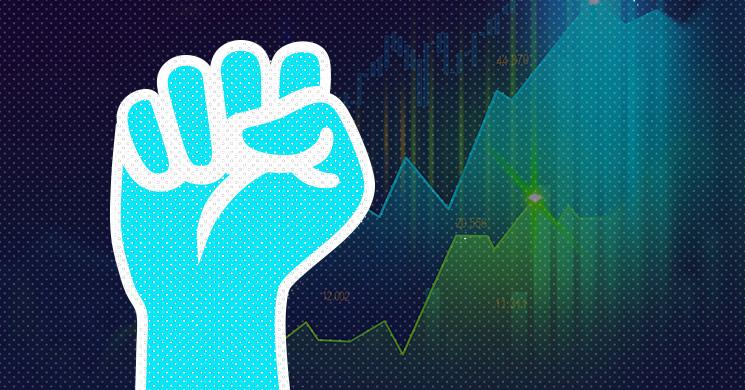
In this Kitco continuing educational feature, I'm going to tackle an issue about which several readers have inquired: How to determine support and resistance areas on the charts.
My favorite method (and I believe this the most accurate method) of determining support and resistance levels is to look at a bar chart and its past price history and then see at what price levels the highs, lows and closes seem to be touching the most. This method of determining support and resistance levels works on any bar chart timeframe--hourly, daily, weekly or monthly. Many times a bunch of highs or lows will be concentrated in a small price area, but not at one specific price. If that's the case, I will determine that area to be a support or resistance "zone." The one thing I will point out with determining support and resistance zones is that you don't want your zone to be so wide that it's virtually useless from a trading standpoint.
Major price tops and bottoms in markets are also major resistance and support levels. Unfilled price gaps on charts also qualify as very good support and resistance levels. Trendline support and resistance is also very useful to the trader. Projecting these trendlines to determine future support and resistance areas is extremely effective.
It's important to note that when a key support level or zone is penetrated on the downside, that level or zone will likely become key resistance. Likewise, a key resistance level or zone that is penetrated on the upside will then likely become a key support level or zone.
Another way to discover support or resistance areas is by looking at "retracements" of a significant price move--price moves that are counter to an existing price trend. These moves are also called "corrections." For example, let's say a market is in a solid uptrend. That uptrend began at the 100 price level and prices rallied to 200. But then prices backed off to 150, only to then turn around and continue to rally higher. This would be considered a 50% retracement of the move from 100 to 200. The 150 level proved to be solid support. In other words, the 50% retracement level proved to be a solid support level because prices dropped by 50% and then moved back higher. The same holds true for downtrends and "corrections" to the upside.
There are a few retracement percentages that work especially well at determining support and resistance levels. They are as follows: 38.2%, 50% and 61.2%. These are called Fibonacci numbers. (Fibonacci was a mathematician.) These three numbers are the best at determining retracement support and resistance levels. Other retracement levels used are 33%, 66% and 75%. Most of the better trading software packages have these percentages calculated in a tool, so that all you have to do, for example, is click your mouse at the beginning of the price trend and then at a high, and the percentage retracements are laid out right on a price chart.
Still another way that support and resistance levels can be identified is through geometric angles from a certain key price point. W.D. Gann, a legendary stock and commodity trader who died in 1955, is the most noted proponent of this method. He also used the same Fibonacci numbers mentioned above to calculate his angles. Again, the better trading software will provide "Gann fans" to plot the angles on the charts.
Finally, support and resistance levels for markets can be determined by "psychological" price levels. These are usually round numbers that are very significant in a market. For example, in crude oil, a psychological price level would be $20 per barrel, or $25, or $30. In soybeans, a price of $5.00 or $6.00 or $4.00 would be a psychological level. In cotton, 50 cents would qualify. Silver would be $5.00.
There are other methods traders use to determine support and resistance levels, but those mentioned above are the most popular.
Read more by Jim Wyckoff







